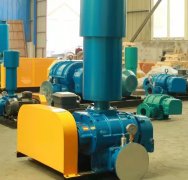Roots blower can operate continuously for 24 hours. Roots blower is a widely used exhaust equipment with the characteristics of simple structure, reliable operation, and low noise. It is widely used in fields such as chemical engineering, food processing, and sewage treatment. Its working principle is to generate airflow by the meshing of two or more Roots impellers that rotate simultaneously. When the impellers rotate, the gas enters through the suction port and gradually accelerates under the action of the impellers, finally being discharged from the outlet.
Although Roots blowers can operate continuously for 24 hours, in order to ensure their long-term stable operation, users need to pay attention to the following points:
Regular maintenance: including visual inspection, motor and control system inspection, cleaning of fan room, cleaning of filters, cleaning of internal dust accumulation, etc. Especially, it is necessary to regularly check the oil level and quality in the fuel tank to ensure that the oil level is not lower than the oil level line, and the oil quality should be maintained in good condition without impurities or emulsification. If necessary, replenish or replace lubricating oil in a timely manner.
Monitoring operating parameters: Regularly monitor the intake and exhaust pressure and temperature to ensure they are within the normal range. At the same time, pay attention to the increasing trend of bearing temperature and motor current to determine whether the machine is running normally.
Backup equipment: For situations where there are requirements for working conditions and the equipment needs to be continuously supplied with gas, it is recommended that users prepare two fans, one for backup and one for use. This can avoid losses caused by the inability of the fan to meet the gas supply requirements after equipment failure.
In summary, Roots blowers can operate continuously 24 hours a day, but users need to perform daily maintenance and upkeep of the equipment, as well as regularly monitor operating parameters to ensure stable operation of the equipment. Meanwhile, preparing backup equipment according to operational requirements is also an effective measure to improve equipment reliability and stability.



